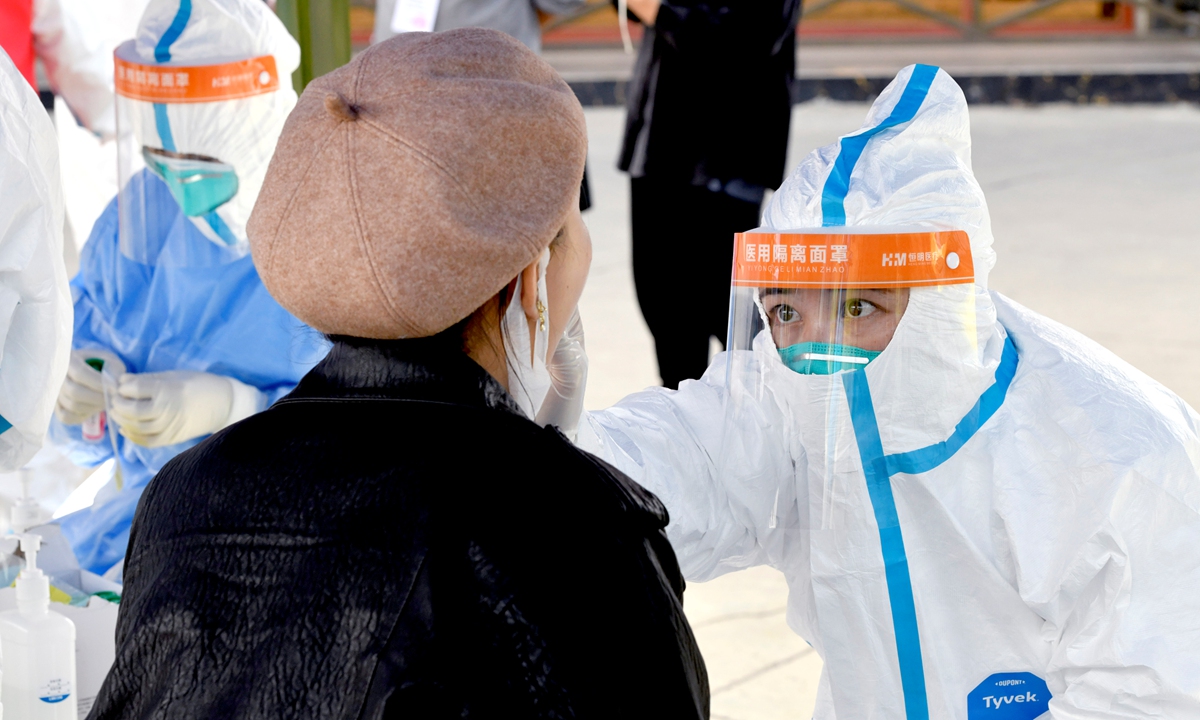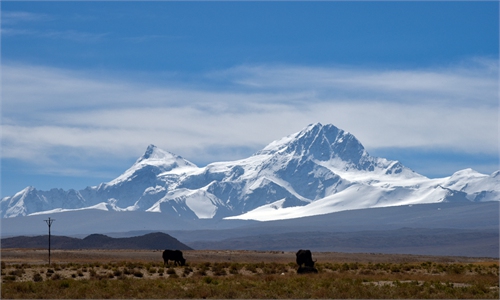China's border regions face test on capability in handling COVID-19 as Xinjiang, Xizang register flare-ups

Residents in Lhasa, Southwest China's Xizang Autonomous Region takes nucleic acid tests on August 9, 2022. Photo: IC
Just as Northwest China's Xinjiang Uygur Autonomous Region grapples with Omicron variants, its neighboring Xizang (Tibet) Autonomous Region in Southwest China reported 27 cases on Tuesday, testing the border regions' capability in handling COVID-19.
The COVID-19 cases detected in Lhasa, capital of Xizang region was believed to be a family cluster infection caused by imported Omicron subvariant BA.2.76, said a local health official based on gene sequencing tests at a press conference on Tuesday morning.
The youngest patient is two and a half, and the eldest so far is a 76-year-old woman, according to the Xizang regional health commission.
Amid the fresh outbreak, World Heritage sites Potala Palace and Norbulingka, as well as the Tibet Museum in Lhasa, were temporarily closed to visitors on Tuesday with undetermined reopening dates.
The Global Times found that COVID-19 cases are prompting Xizang region, which only had one outbreak back in 2020, to quickly mobilize its resources and manpower to cope with dilemmas relating to epidemic prevention and control, due to a lack of medical personnel and nucleic acid testing sample collectors, as well as a shortage of oxygen for treating severe cases due to its high altitude.
"Now the hospital doesn't have enough manpower to deal with the sudden COVID-19 flare-up, even if we dispatched all its medical workers including the administrative staff against the epidemic," a staffer from a functional department of the Xigaze Tibetan Hospital told the Global Times on Tuesday.
The Youth Volunteers Association of Xizang released a notice on Tuesday seeking volunteers to join the city's anti-epidemic mission in posts like on-site maintenance of public order, checking people's nucleic acid tests, reminding others to wear masks, and assisting local communities to deliver food to epidemic-affected residents.
Lhasa has arranged 305 nucleic acid testing venues in the Chengguan district. It is expected to finish the first round of regional mass testing by Tuesday night.
Xizang region also set up three makeshift hospitals respectively in Lhasa, Xigaze and Qamdo with 4,004 beds to take in asymptomatic and mild cases. Elderly people and those with severe symptoms and underlying diseases will be treated in seven other designated hospitals across the region, local officials said at Tuesday's press conference.
A doctor from the Lhasa People's Hospital who preferred not to be identified told the Global Times that the treatment of mild cases is not a big problem for Xizang, as makeshift hospitals are arranged to take care of them, but the treatment of severe cases would be a challenge due to the lack of oxygen in the high-altitude location and limited medical equipment.
The abrupt flare-up in Xizang also brought tourists' travel plans in the "pure land" to a screeching halt.
A traveler surnamed Song stranded in Xigaze told the Global Times on Tuesday that he could leave the hotel and walk in the street. Song said he saw almost all stores had been closed but the hospital was still open.
"The local community has arranged staffers to come to the hotel every day to conduct nucleic acid tests for the tourists," Song said. Xigaze on Monday put the whole city under three-day static management, with nobody allowed to enter or leave the city.
Another tourist surnamed Huang said that she once worried about her living supplies because the hotel she stayed at was short of supplies, and she failed to order food from stores that had been shut down.
"But thanks to the coordination of the local government, I can contact a supply company that will deliver food including box lunches, instant noodles, bread, ham sausages and water to me. The food is free of charge and supplied from 11 am to 7 pm," said Huang.
Lhasa announced plans to implement static management in medium- and high-risk areas, and cross-city travelers in low-risk areas will be required to present a 48-hour negative nucleic acid testing result.
In Xinjiang, COVID-19 infections continued to rise on Tuesday after 10 days of epidemic handling. The daily tally on Monday was 146, taking total infections to 420 as of press time.
Since the first case was found on July 30, the Xinjiang region has seen at least 12 counties in seven prefectures hit by COVID-19. Zhang Yuexin, a medical expert specializing in epidemic prevention and control, told the Global Times that the challenge for Xinjiang is that more cases still can be found among communities, which indicates that the transmission chain has yet to be cut off.
Zhang said that this wave of Xinjiang's outbreak originated from imported goods in Ili Kazak Autonomous Prefecture. How to better keep out virus transmission from overseas cargo is a long-term test for Xinjiang, he said.
Huang Ziting contributed to the story


